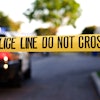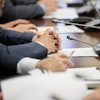
Treating pediatric patients with dental fear and anxiety can be challenging for clinicians, who must be familiar with multiple techniques to calm and treat patients. Which technique is best? A recent review article that was published on September 22 in the Journal of Dentistry set out to answer that question.
Dental fear and anxiety can directly impact behavior during dental treatment, especially in pediatric patients. This can create challenges for the clinician and added stress for the patient's caregivers.
Researchers analyzed studies regarding the effectiveness of basic behavioral management techniques (BMTs) in pediatric patients experiencing anxiety. A total of 62 articles were included in the analysis.
The results suggested that all basic BMTs have acceptable effectiveness. "Clinicians should therefore, have a wide range of techniques to meet patients' needs at [an] individual level and be flexible in their implementation," wrote the study authors, led by Dr. Sotiria Gizani of the University of Athens in Greece.
BMTs are divided into two categories: basic and advanced. Basic BMTs include tell-show-do, distraction, reinforcement, voice control, modeling, and parental presence. Advanced BMTs include active and passive restraint, sedation, and general anesthesia. Basic techniques are more commonly used by practitioners.
"Results from most studies supported that all techniques are effective in reducing children's heart rate and oxygen saturation during dental treatment, while also managing their levels of anxiety and fear before, during and after various dental procedures," wrote the article's authors.
More specifically, audiovisual and audio distraction were effective techniques for reducing anxiety, fear, and disruptive behavior during treatment. "This could be attributed to [the] technique's ability to engage children's attention, thus occupying their thoughts away from the procedure and minimizing unpleasant stimuli from the dental environment," explained the authors.
This finding parallels previous literature reporting a positive effect of distraction techniques on behavior alteration during dental treatment. However, patient preferences in the form of distraction varied by age.
Study findings indicate that older children typically prefer virtual eyeglasses or distraction with mobile phone games. Children age 8 and younger preferred more passive forms of distraction, such as a tablet or screen attached to the dental chair.
"Younger children's reluctance towards virtual eyeglasses was attributed to their cognitive development as it increased their existing anxiety by completely separating them from the surrounding environment," noted the authors.
The article also reported that modeling was effective and can be used as an alternative to the tell-show-do technique. Live modeling was found to be more effective than tell-show-do in younger age groups.
Newer techniques that combine systematic desensitization, relaxation, and cognitive restructuring, like hypnosis, are also effective "This is mainly attributed to their ability to help children enhance control over their negative thoughts, reduce anxiety and therefore improve cooperation," explained Gizani and colleagues.
Overall, no BMT can be recommended over another, as all are shown to be effective. "[The] Appropriate technique should incorporate patients' personality and parents' active involvement, within the contents of the changes in modern societies," concluded the authors.


















